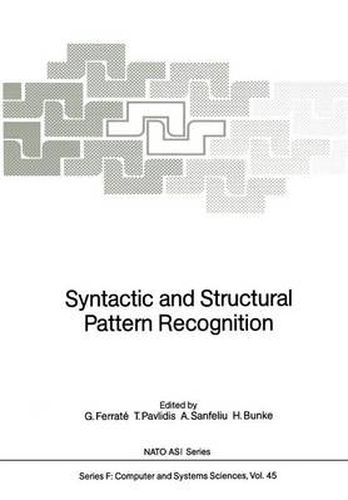Readings Newsletter
Become a Readings Member to make your shopping experience even easier.
Sign in or sign up for free!
You’re not far away from qualifying for FREE standard shipping within Australia
You’ve qualified for FREE standard shipping within Australia
The cart is loading…






This title is printed to order. This book may have been self-published. If so, we cannot guarantee the quality of the content. In the main most books will have gone through the editing process however some may not. We therefore suggest that you be aware of this before ordering this book. If in doubt check either the author or publisher’s details as we are unable to accept any returns unless they are faulty. Please contact us if you have any questions.
Thirty years ago pattern recognition was dominated by the learning machine concept: that one could automate the process of going from the raw data to a classifier. The derivation of numerical features from the input image was not considered an important step. One could present all possible features to a program which in turn could find which ones would be useful for pattern recognition. In spite of significant improvements in statistical inference techniques, progress was slow. It became clear that feature derivation was a very complex process that could not be automated and that features could be symbolic as well as numerical. Furthennore the spatial relationship amongst features might be important. It appeared that pattern recognition might resemble language analysis since features could play the role of symbols strung together to form a word. This led. to the genesis of syntactic pattern recognition, pioneered in the middle and late 1960’s by Russel Kirsch, Robert Ledley, Nararimhan, and Allan Shaw. However the thorough investigation of the area was left to King-Sun Fu and his students who, until his untimely death, produced most of the significant papers in this area. One of these papers (syntactic recognition of fingerprints) received the distinction of being selected as the best paper published that year in the IEEE Transaction on Computers. Therefore syntactic pattern recognition has a long history of active research and has been used in industrial applications.
$9.00 standard shipping within Australia
FREE standard shipping within Australia for orders over $100.00
Express & International shipping calculated at checkout
This title is printed to order. This book may have been self-published. If so, we cannot guarantee the quality of the content. In the main most books will have gone through the editing process however some may not. We therefore suggest that you be aware of this before ordering this book. If in doubt check either the author or publisher’s details as we are unable to accept any returns unless they are faulty. Please contact us if you have any questions.
Thirty years ago pattern recognition was dominated by the learning machine concept: that one could automate the process of going from the raw data to a classifier. The derivation of numerical features from the input image was not considered an important step. One could present all possible features to a program which in turn could find which ones would be useful for pattern recognition. In spite of significant improvements in statistical inference techniques, progress was slow. It became clear that feature derivation was a very complex process that could not be automated and that features could be symbolic as well as numerical. Furthennore the spatial relationship amongst features might be important. It appeared that pattern recognition might resemble language analysis since features could play the role of symbols strung together to form a word. This led. to the genesis of syntactic pattern recognition, pioneered in the middle and late 1960’s by Russel Kirsch, Robert Ledley, Nararimhan, and Allan Shaw. However the thorough investigation of the area was left to King-Sun Fu and his students who, until his untimely death, produced most of the significant papers in this area. One of these papers (syntactic recognition of fingerprints) received the distinction of being selected as the best paper published that year in the IEEE Transaction on Computers. Therefore syntactic pattern recognition has a long history of active research and has been used in industrial applications.